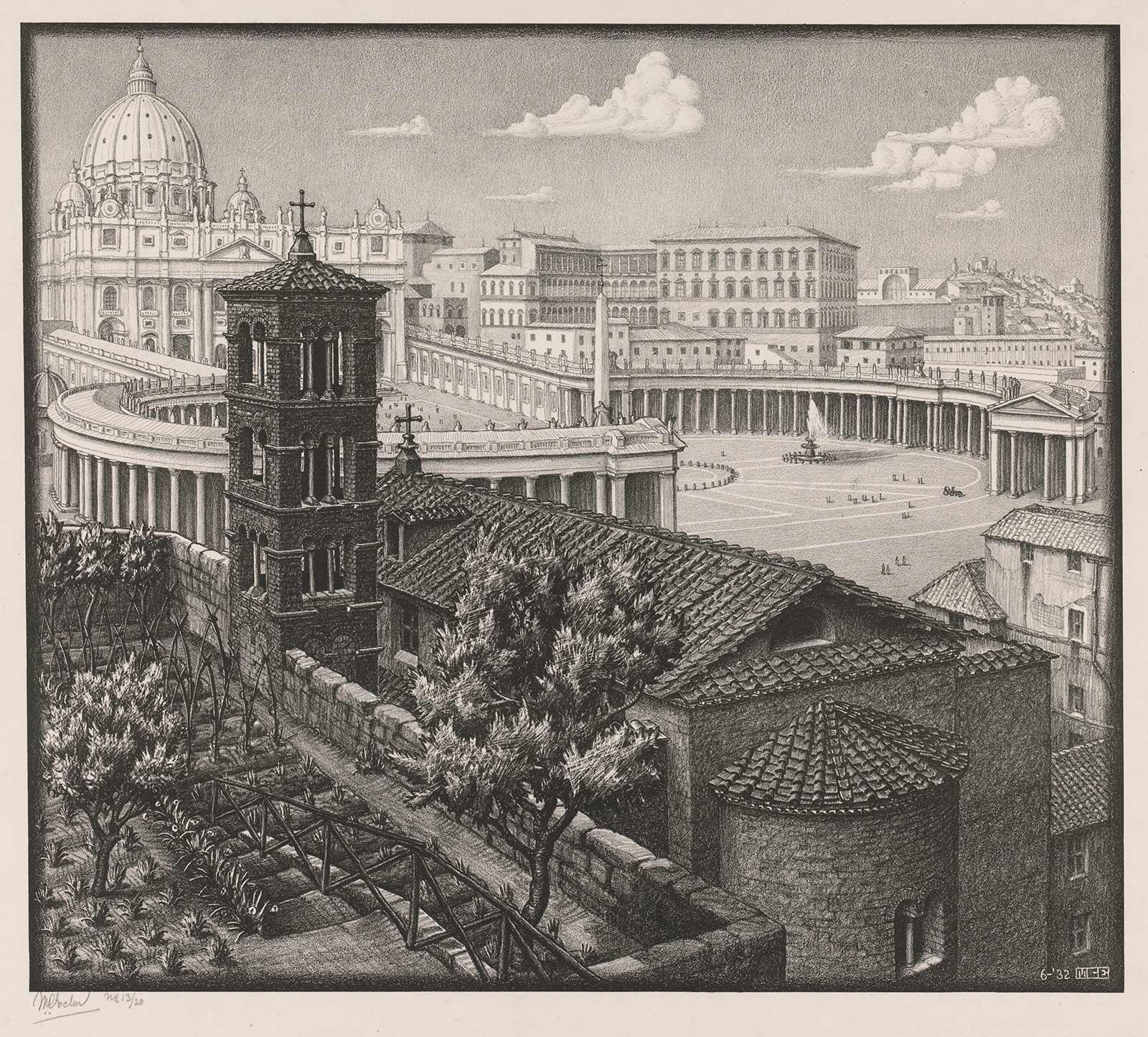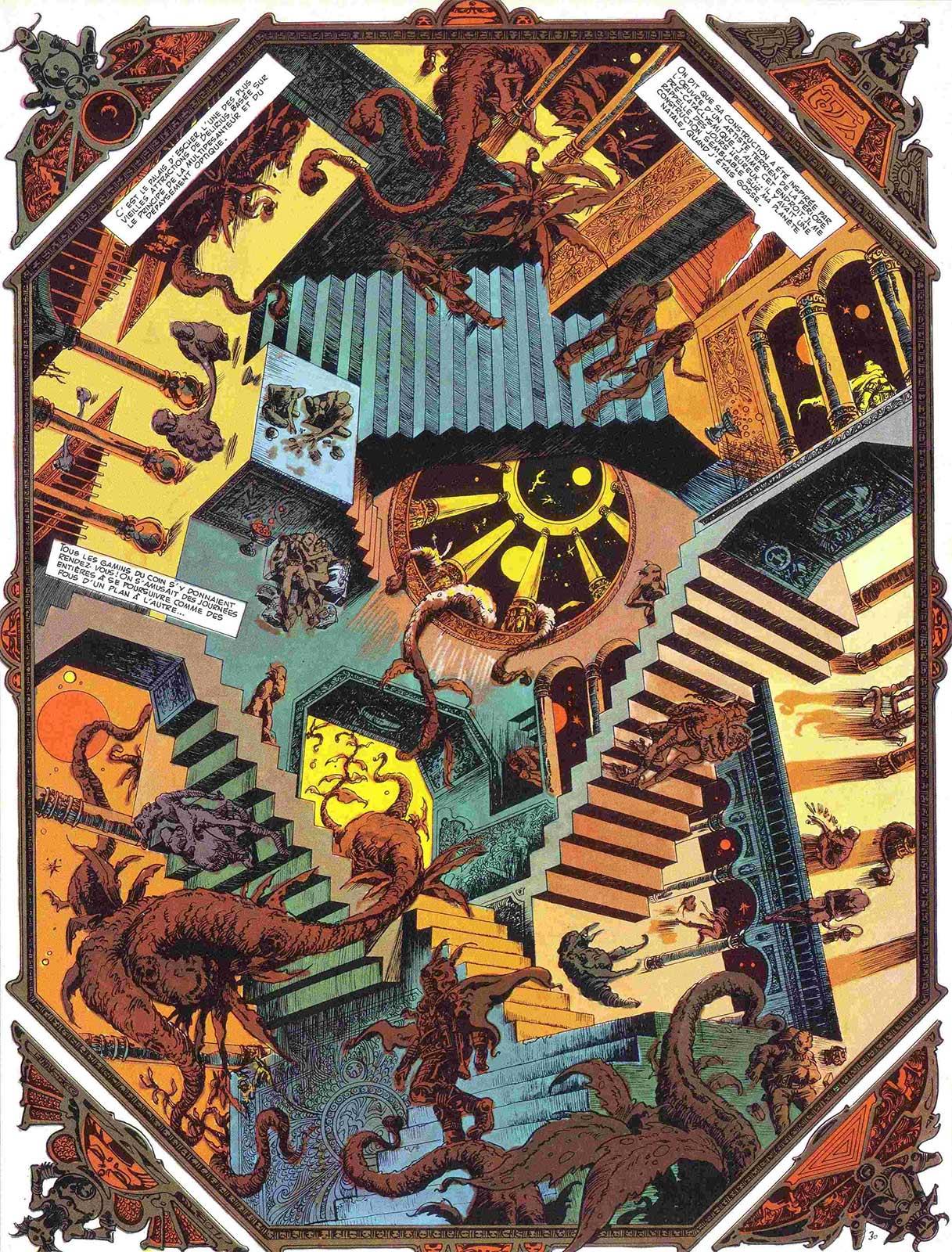

Like an intriguing jewel on a jet-black background, the shells from this wood engraving illuminate the immense dark space behind it. Concentric Rinds (1953) is one of Escher’s most ingenious works as well as one of his most mysterious.
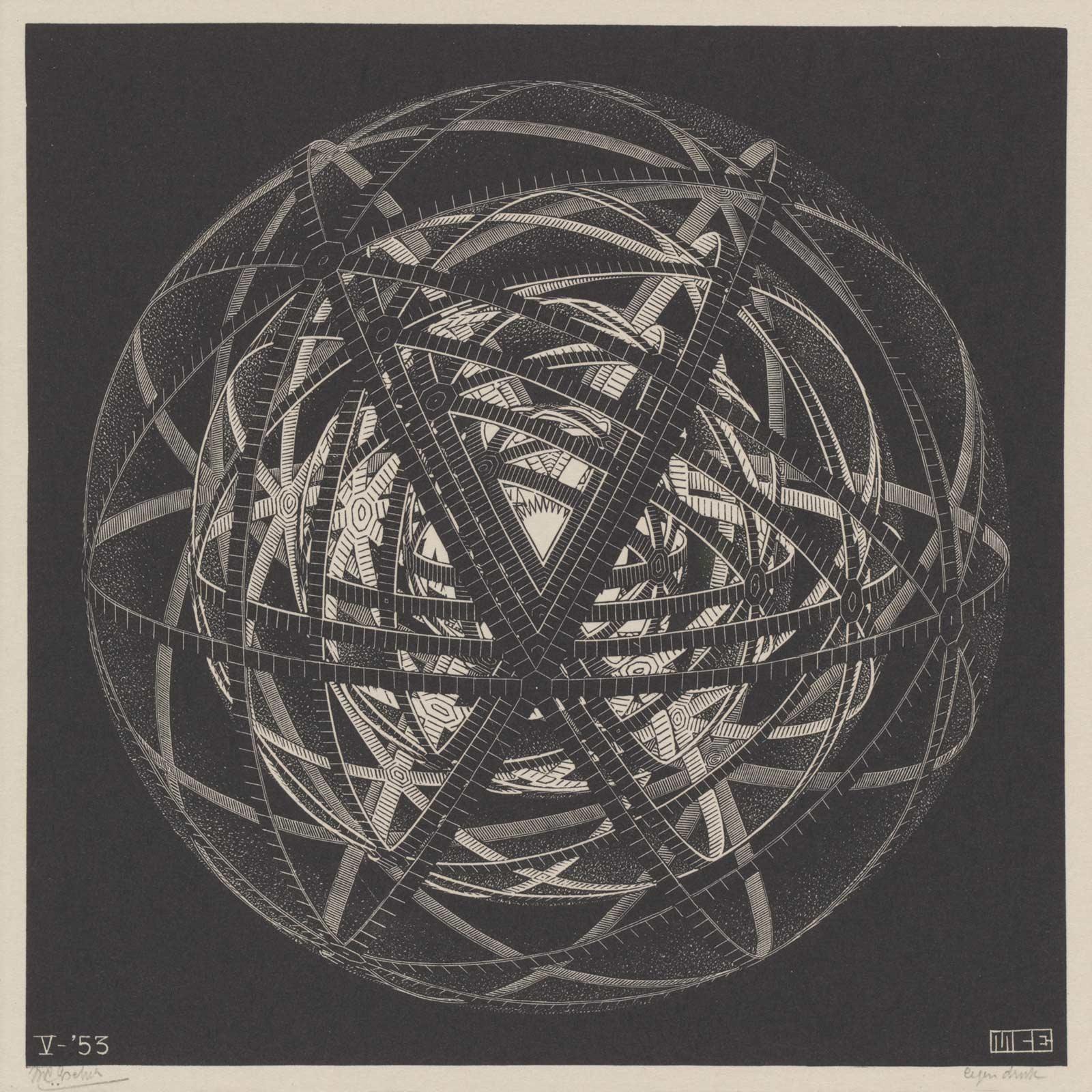
Himself, he describes the print as follows *:
‘Four spherical concentric shells are illuminated by a central source of light. Each shell consists of a network of nine large circles which divide the surface of the sphere into 48 similarly shaped spherical triangles’.
Concentric Rinds is a print that fits in his series of celestial bodies, which also include works like Stars (1948), Double Planetoid (1949) and Tetrahedral Planetoid (1954). It also fits in a series of prints in which Escher explores complex three-dimensional shapes and even invents them himself. Like Two Intersecting Planes (1952), Three Intersecting Planes (1954), Cubic Space Division (1952), Spirals (1953), Cube with Ribbons (1957), Sphere Spirals (1958), Four Regular Solids (1961), and Knots (1965). These prints are not among the most popular in his oeuvre, but are so ingenious that they deserve more attention.
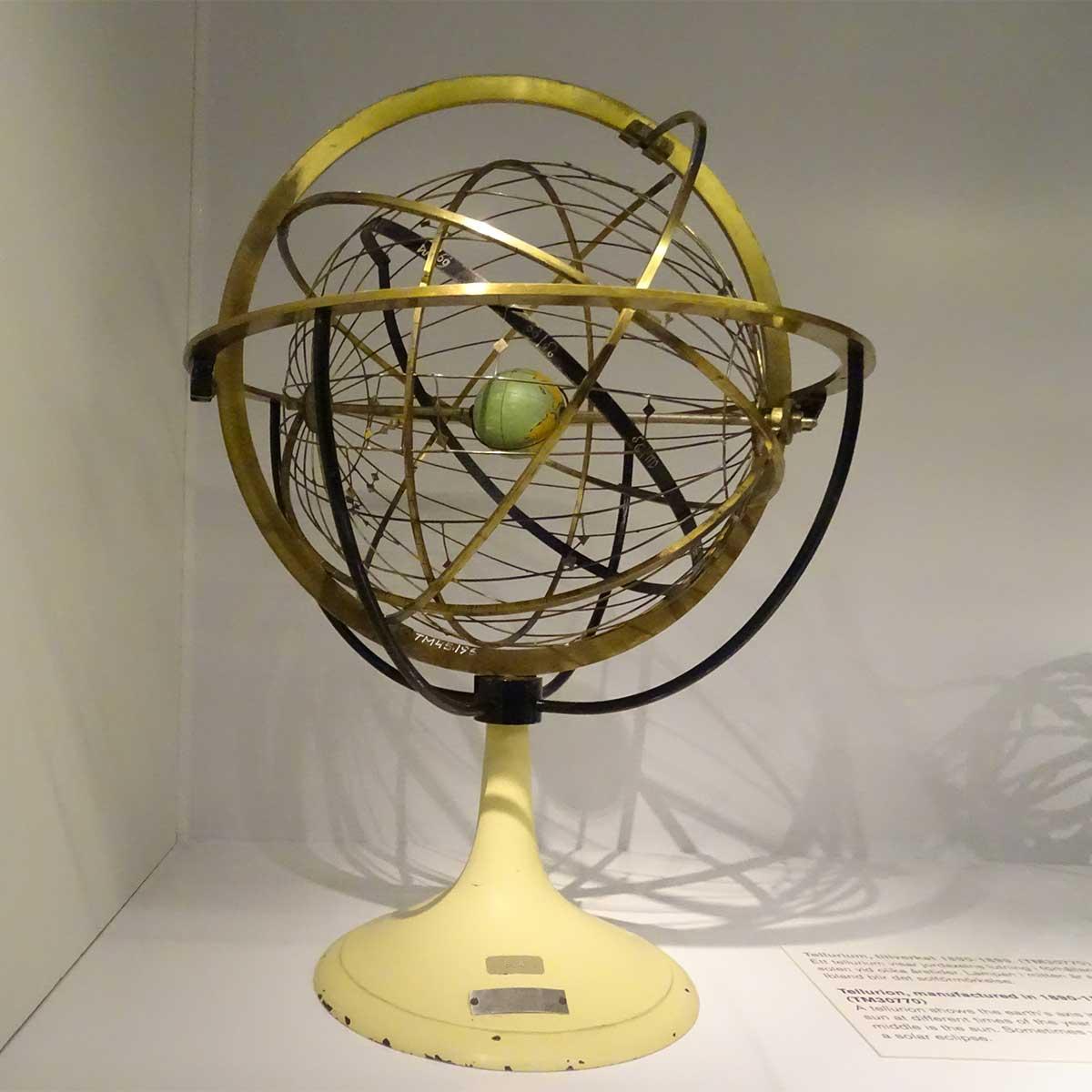
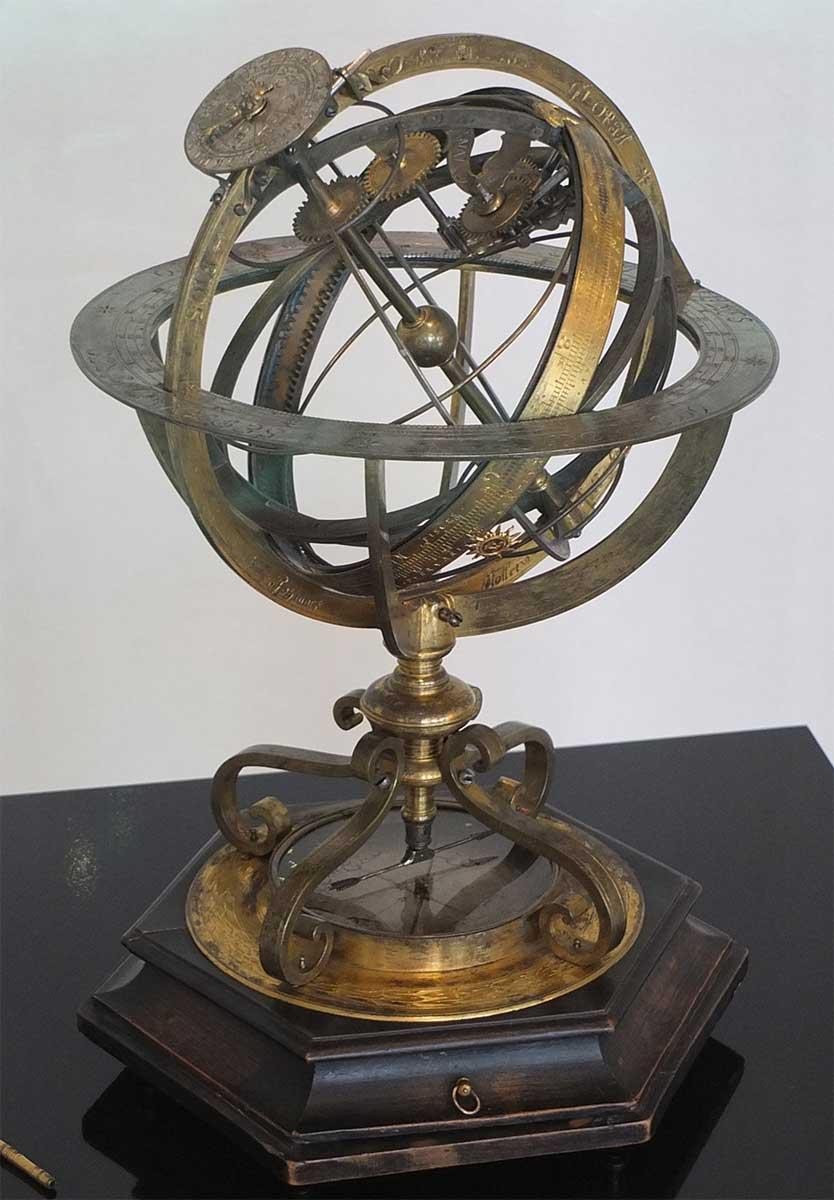
As is typical for Escher, his description in The Graphic Work is an objective one. He describes what the viewer sees and does not make any comments on possible messages or hidden meanings and deeper layers. Even though it's his prerogative, I will attempt to analyse the print anyway.
From cosmos and time machine to Game of Thrones
This print evokes all kinds of associations for me. The most direct link is the one with a so-called armillary sphere. This is a model of the cosmos in which the orbits of the heavenly bodies are represented by rings (armillae in Latin). The armillary sphere was invented by Eratosthenes in ca. 255 BC. Usually the earth was placed in the middle of metal circles. Later, when science was more advanced, it became the sun.
It is also strongly reminiscent of a gyroscope, a rotationally symmetrical mass that can rotate on its axis. A gyroscope is often enclosed in a gimbal suspension so that it can rotate freely in all three dimensions. A gyroscope is a practical tool that is used in a compass or smartphone and also in a Steadicam (a camera that can rotate freely along several axes). A similar form is also used in fiction. The most appealing fantasy is the time machine. A gyroscope forms the basis for the time machine that can be seen in the comic album The Time Trap, from the Blake and Mortimer series by Edgar P. Jacobs. In the 1997 film Contact, the machine with which Jodie Foster contacts extraterrestrial life also has the shape of a gyroscope.
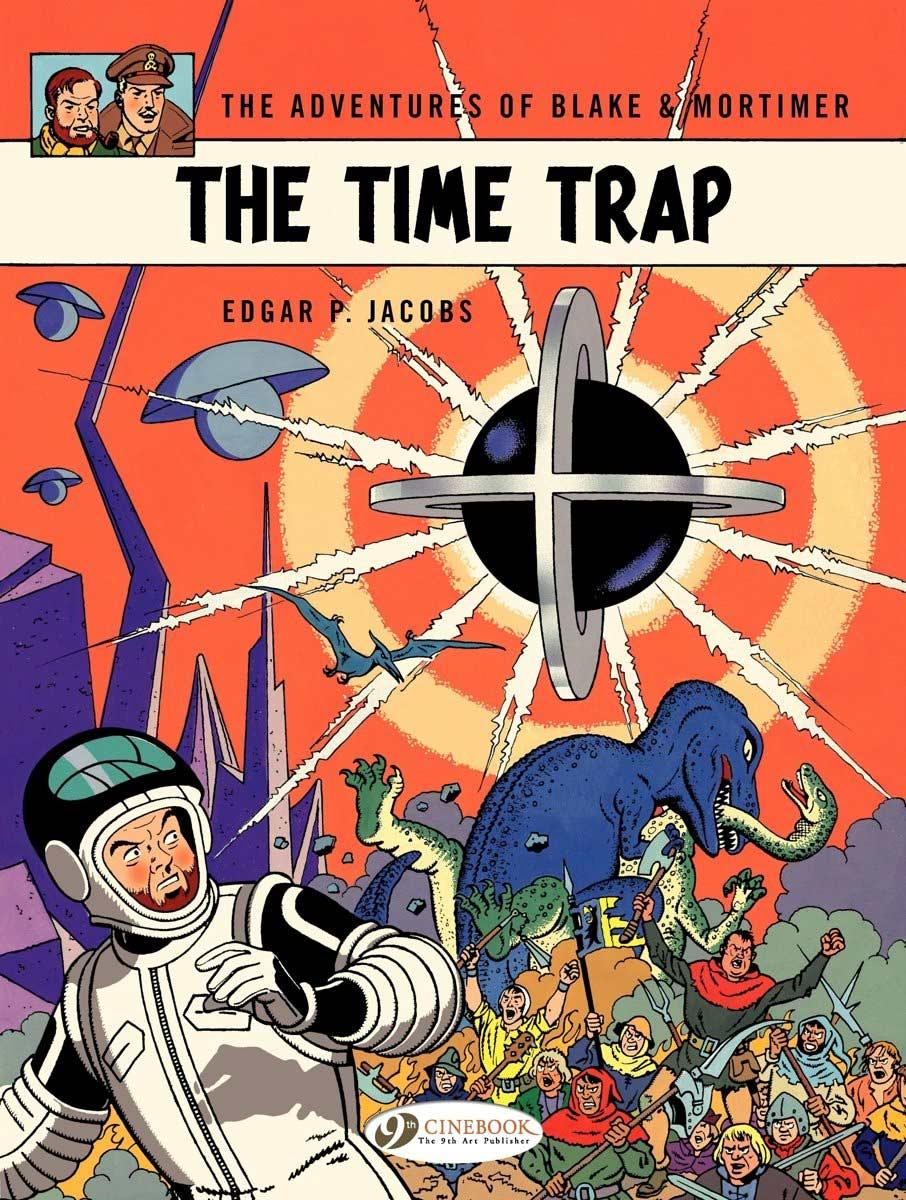
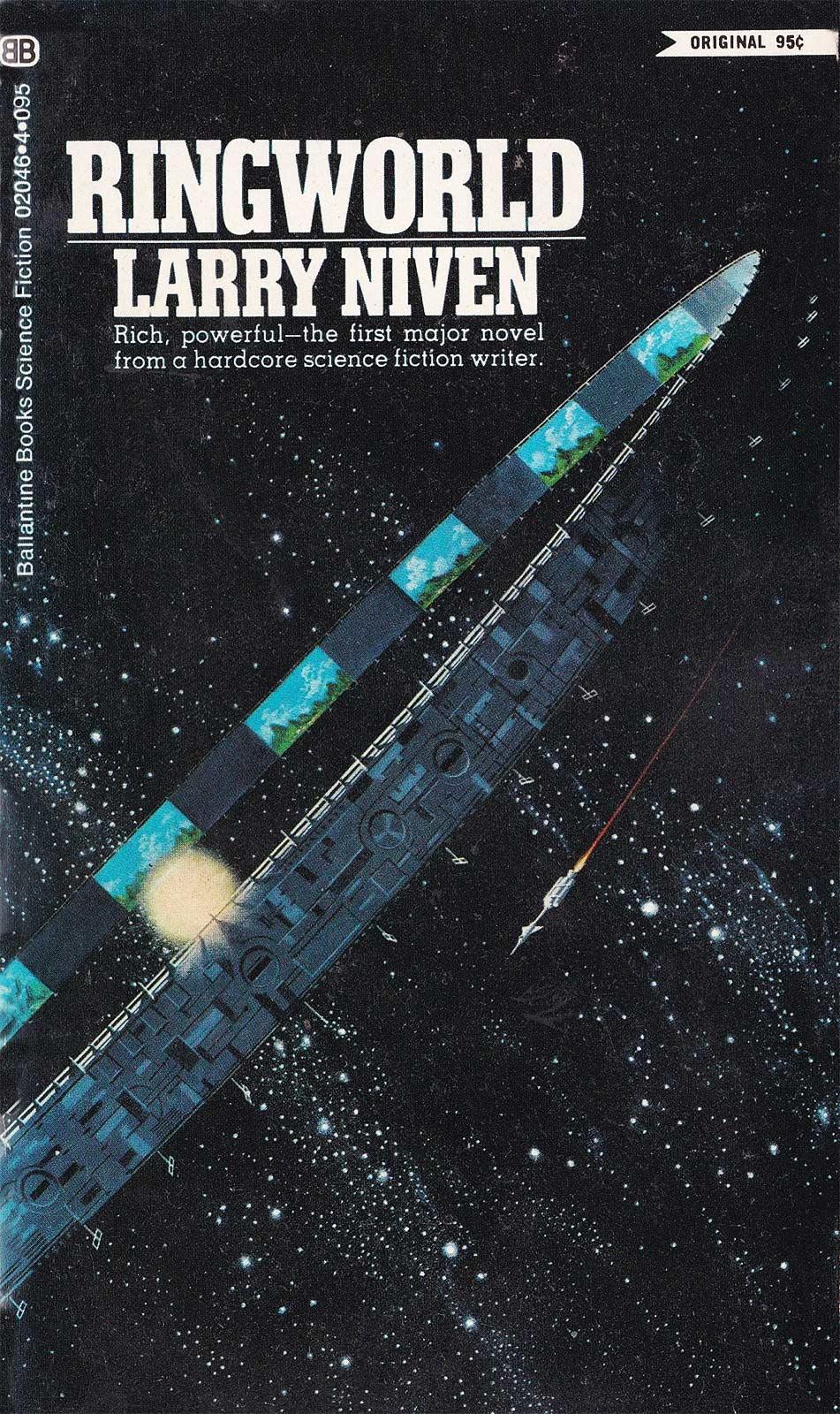
Analyzing even further you can see the similarity with the so-called Dyson shell (or Dyson ring or Dyson sphere). It is named after the Anglo-American physicist and mathematician Freeman Dyson (1923). A Dyson shell is a thought experiment in which a mega structure is built around a star. In this mega structure, almost all of the energy from this star is collected. The structure was first described in the novel Star Maker (1937) by the British writer and philosopher Olaf Stapledon, but Dyson further described and popularised it. Dyson reasoned that such a system would be the logical consequence of the long-term development of technological civilisations. The Ring World books by science fiction writer Larry Niven are set in a single Dyson ring. During the opening titles of the hit series Game of Thrones, a Dyson ring can also be seen.The battle between the 7 Kingdoms for The Iron Throne is fought out in the central world in that ring, as the opening sequence suggests. Concentric Rinds can be seen as a network of Ring Worlds around a star.
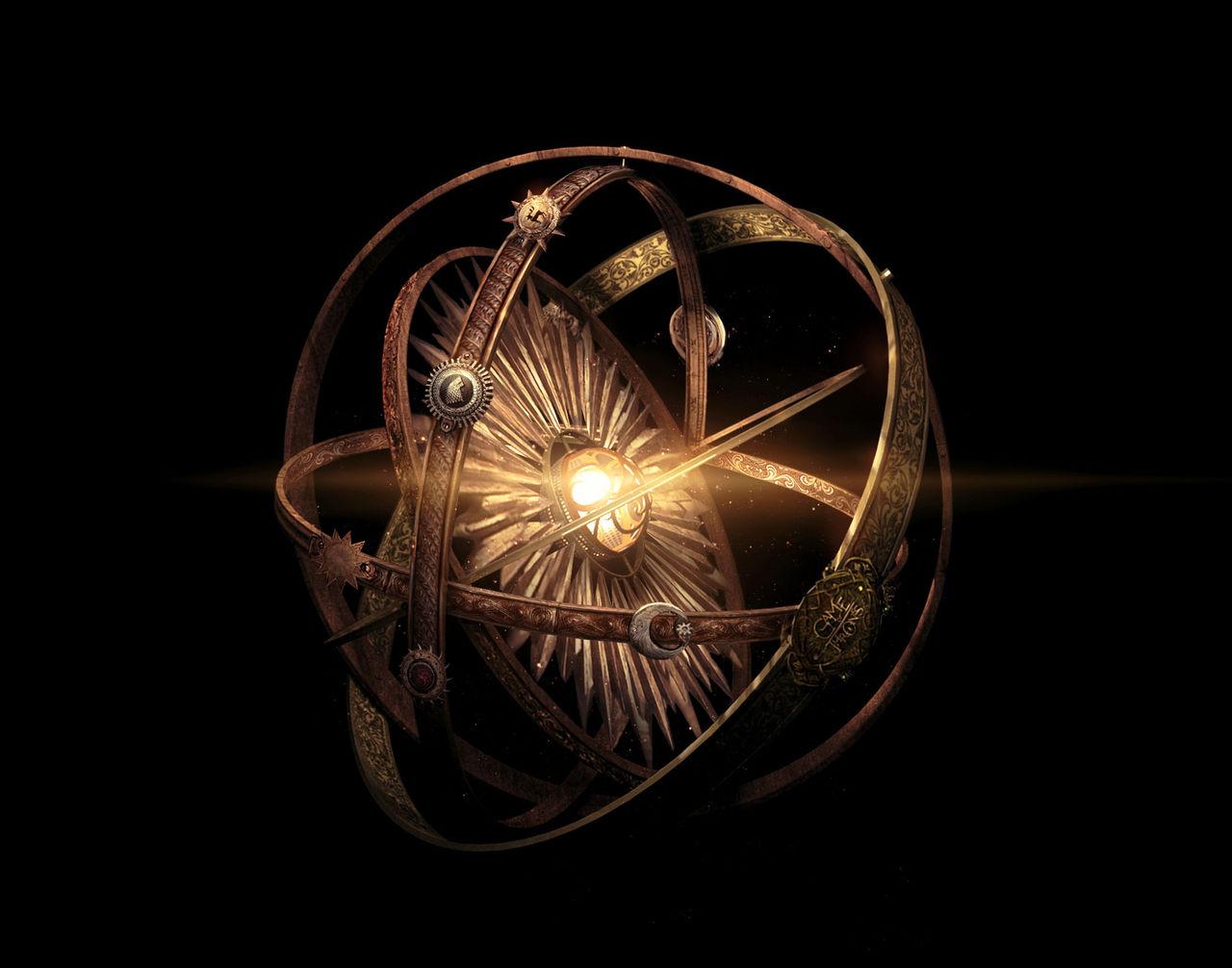
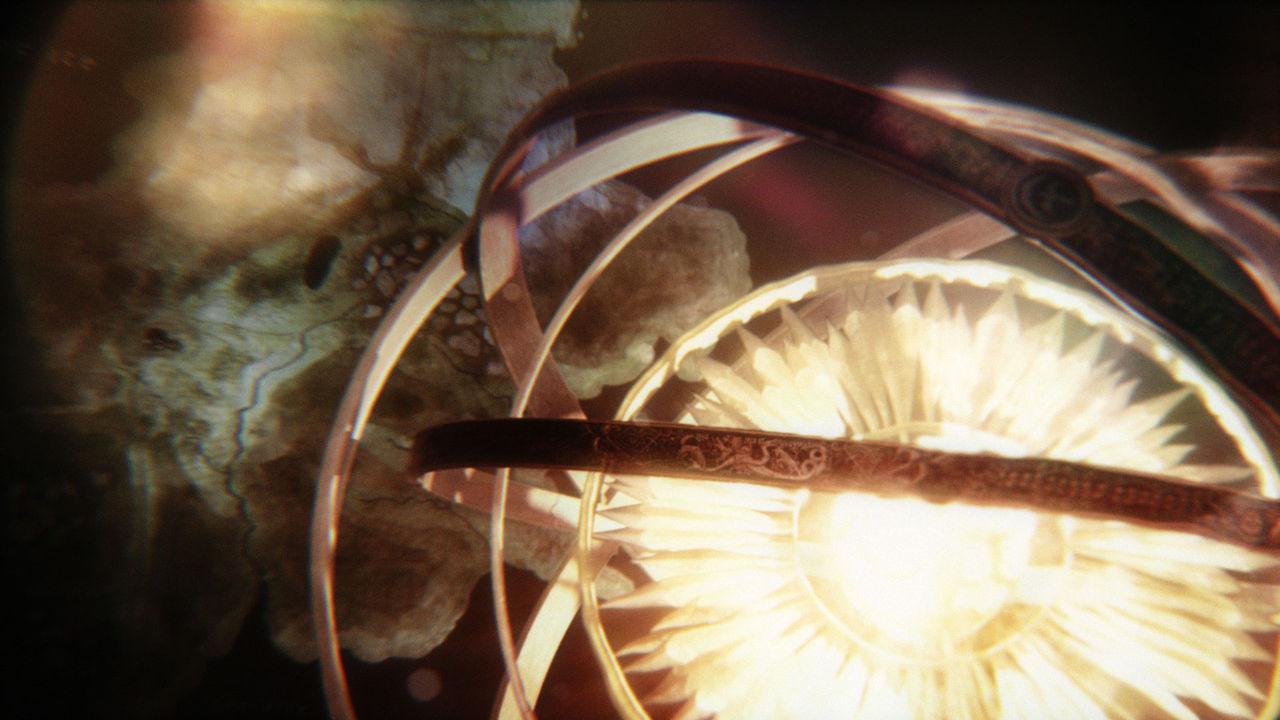
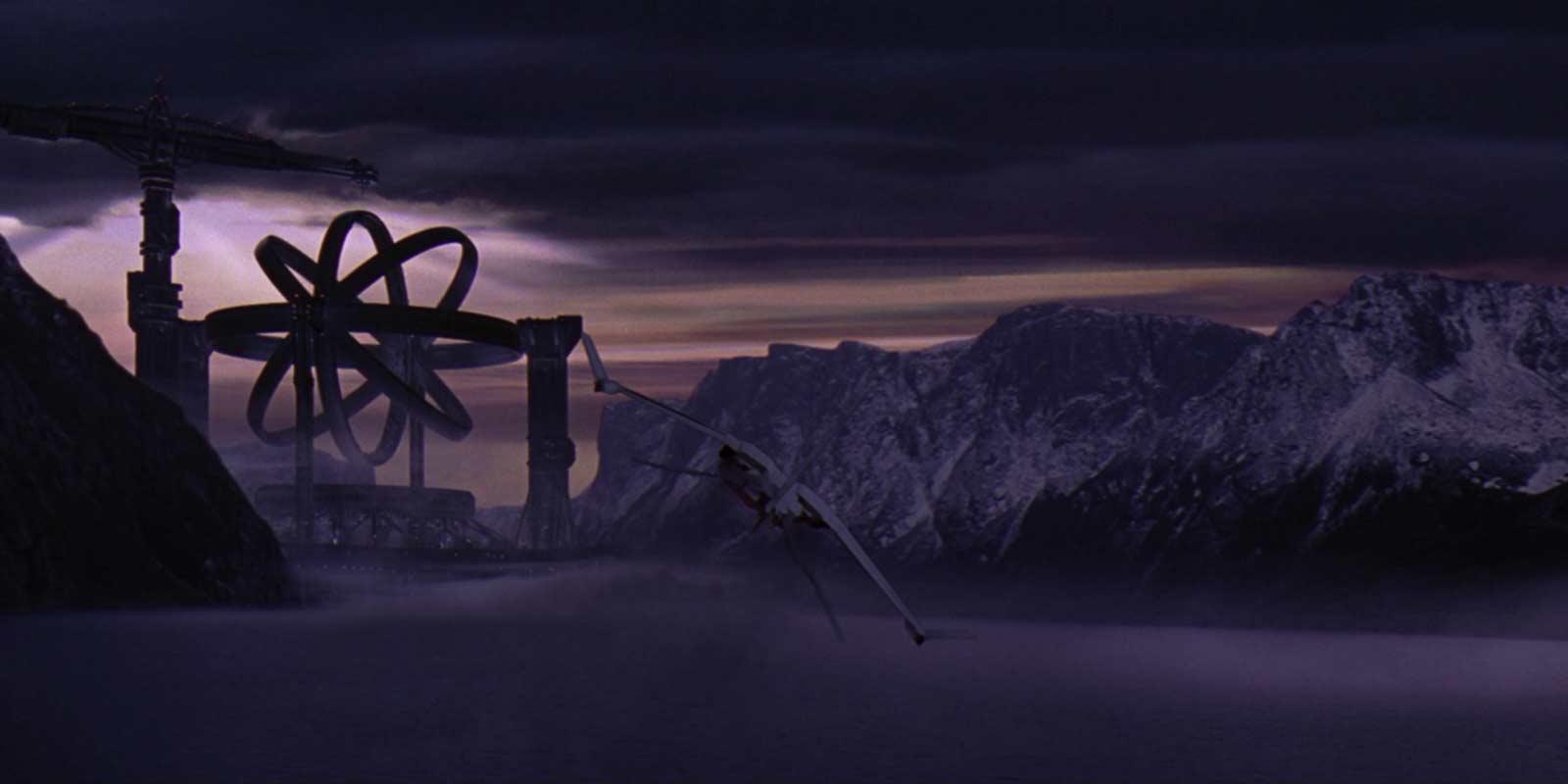
And then there is the link with nuclear energy. Concentric Rinds resembles its symbol, a number of rings revolving around a core. What Escher thought about nuclear energy is unknown, but in the 1950s the Netherlands (like many other Western countries) was under the spell of this new energy source which seemed to present so many opportunities for the future. In December 1953, United States president Eisenhower was to deliver his famous ‘Atoms for Peace’ speech, announcing that the US was giving up its nuclear technology monopoly and wanted to provide reactors and technology to other countries. Nuclear technology no longer had to be used to wage war, but to serve humanity. There was a lot of optimism in the world about nuclear energy and the Escher print seems to tie in with this in a visual sense.
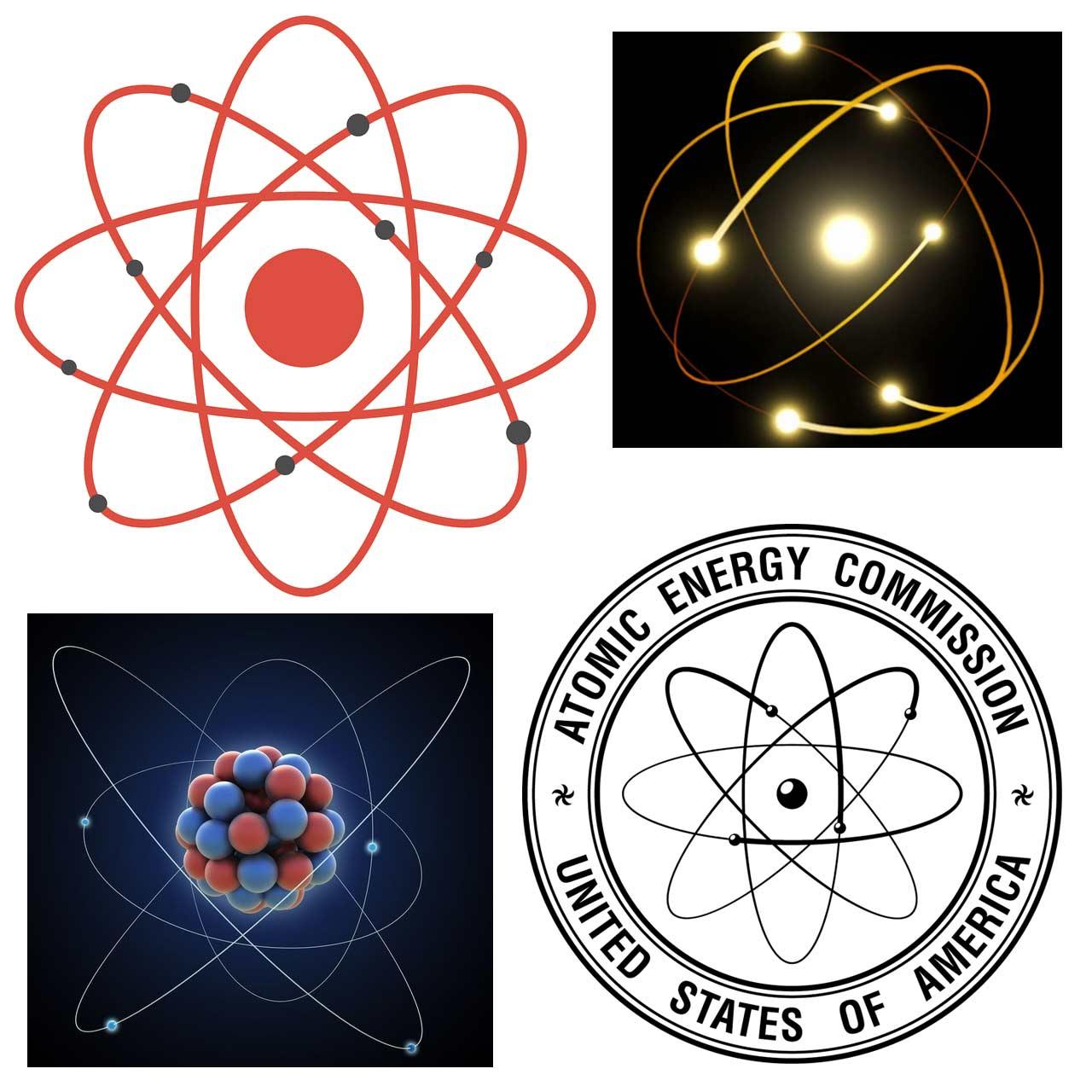
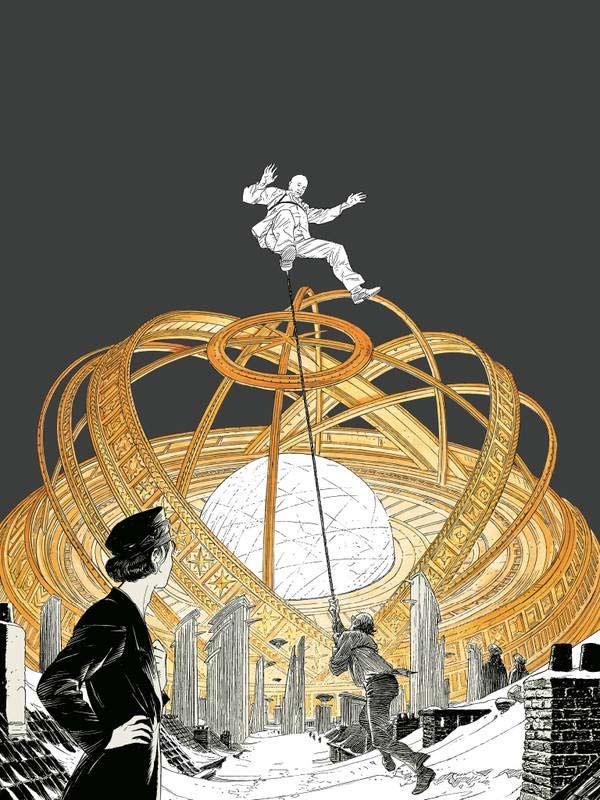
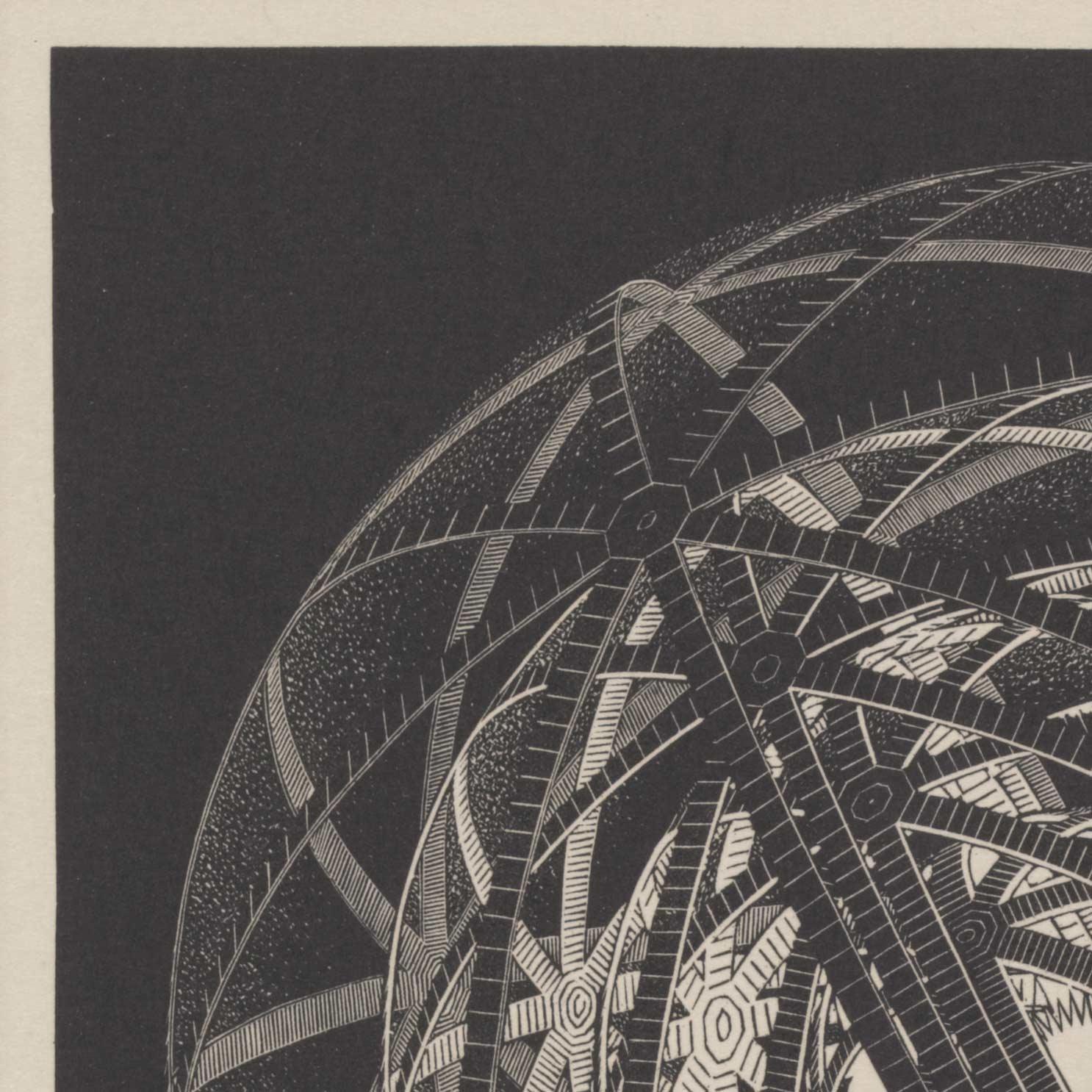
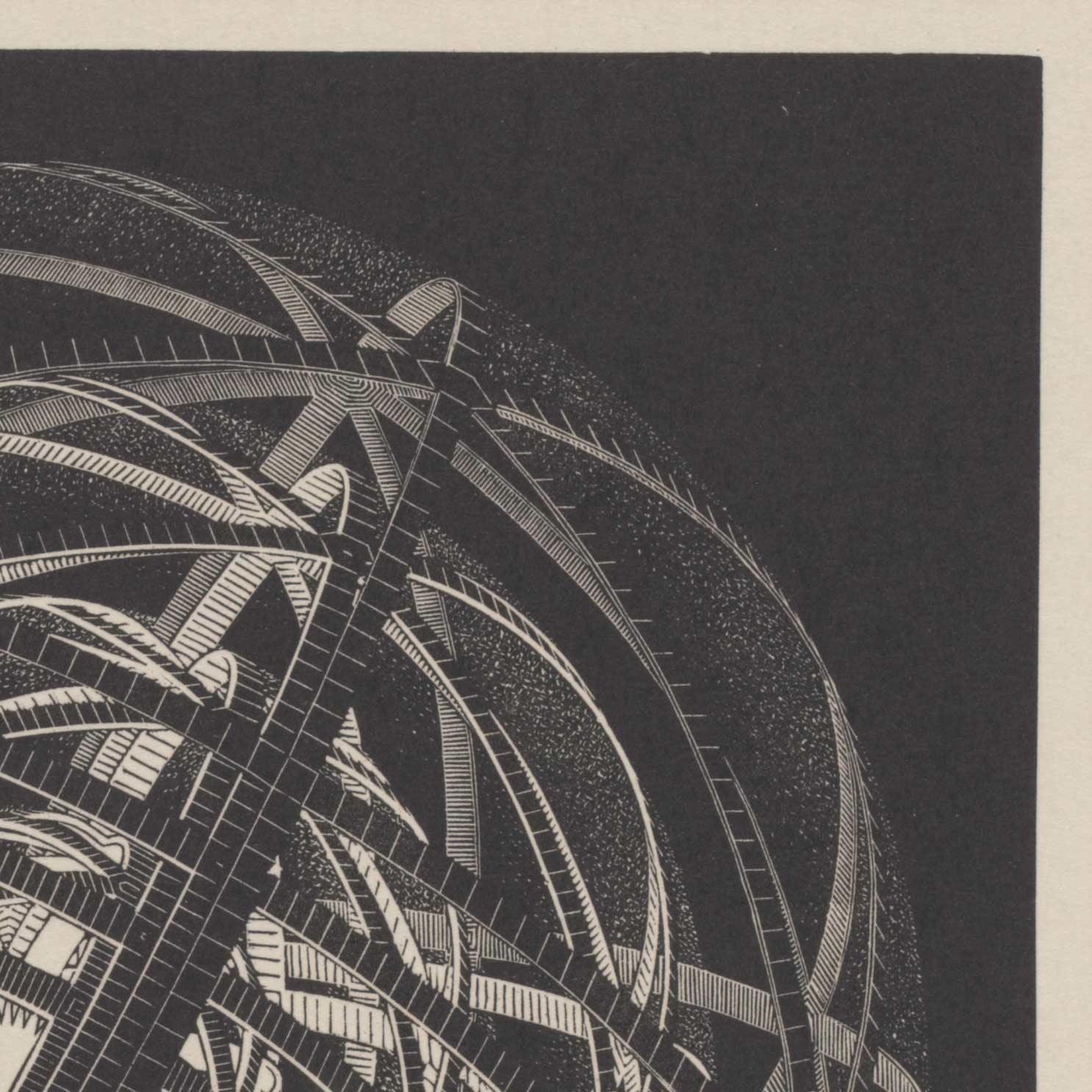
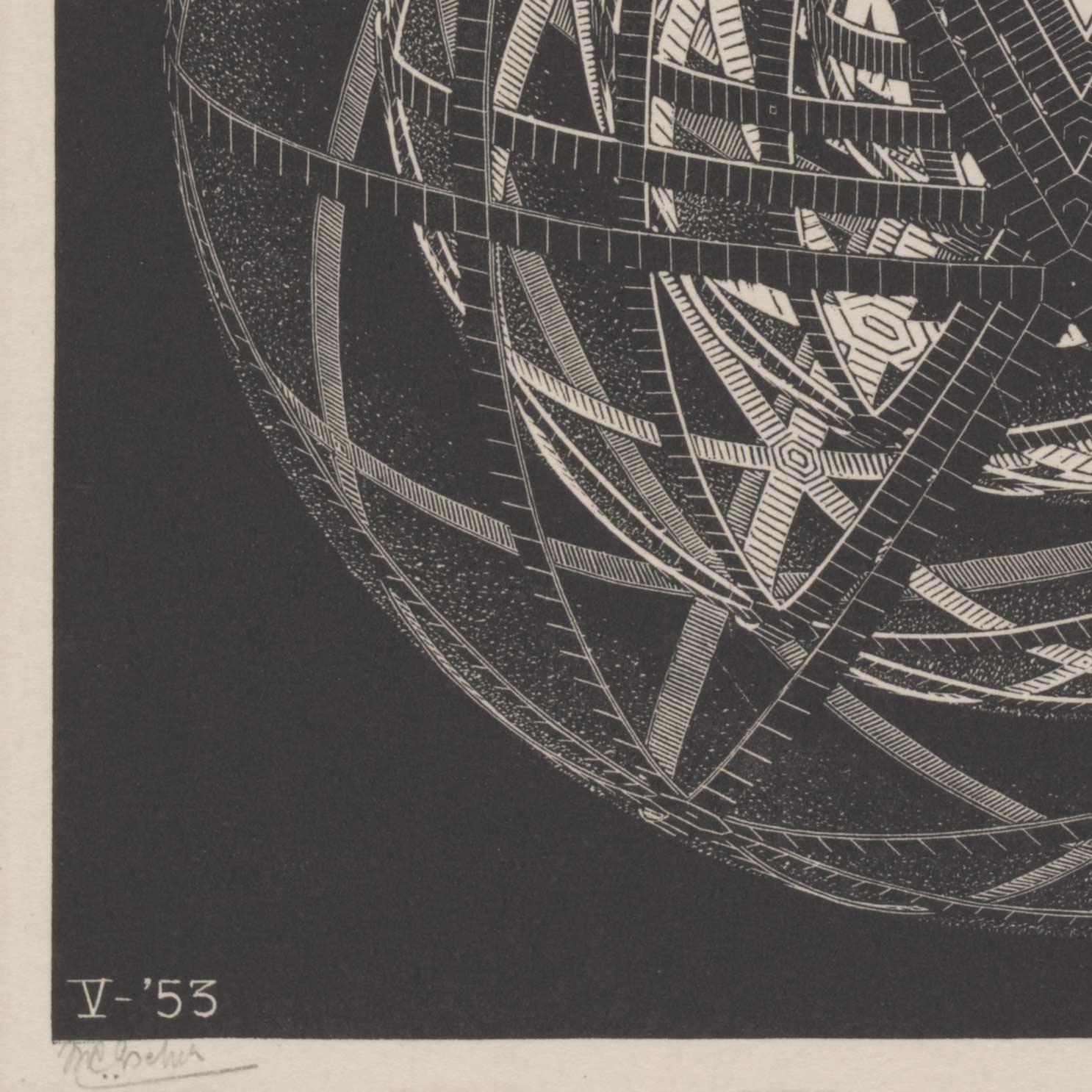
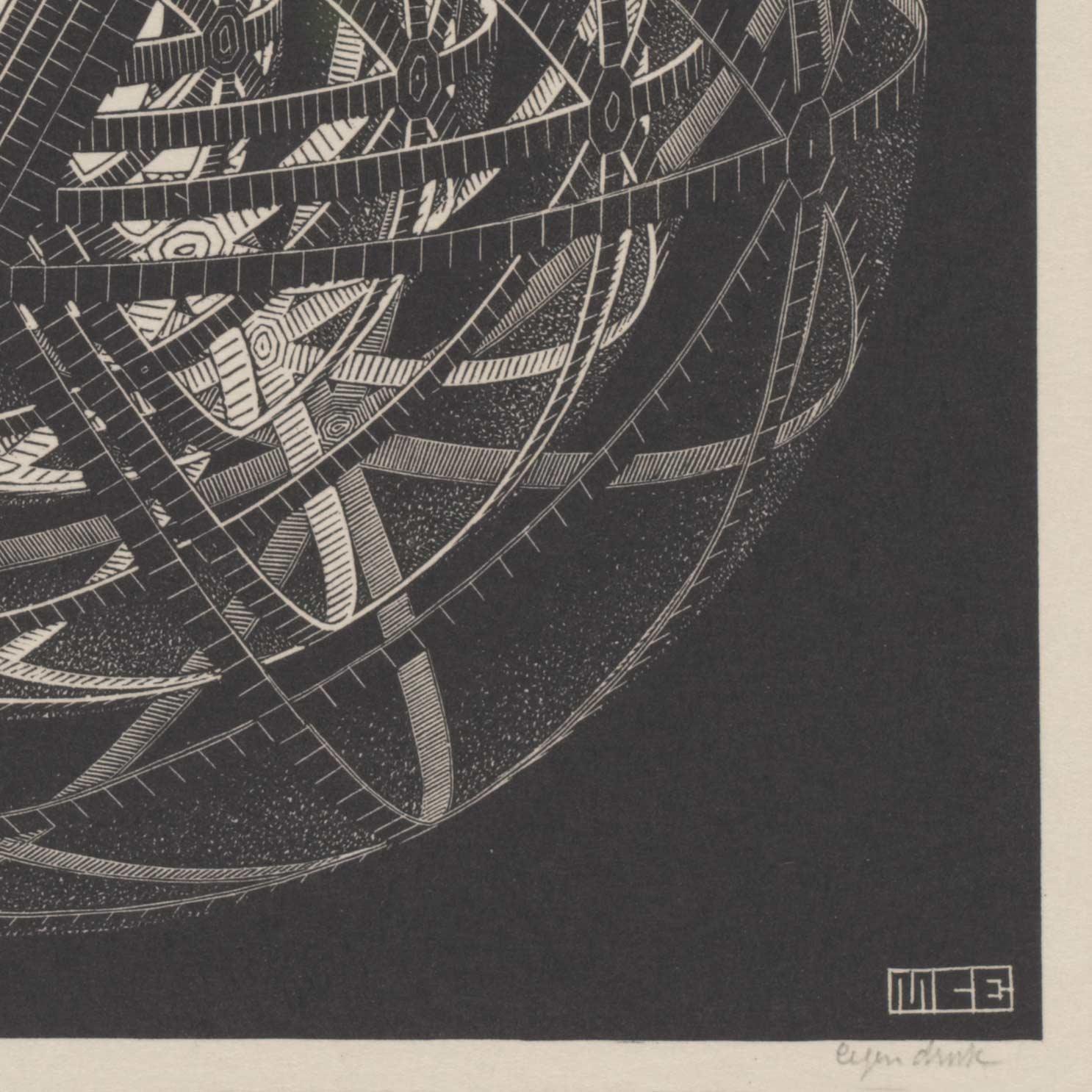
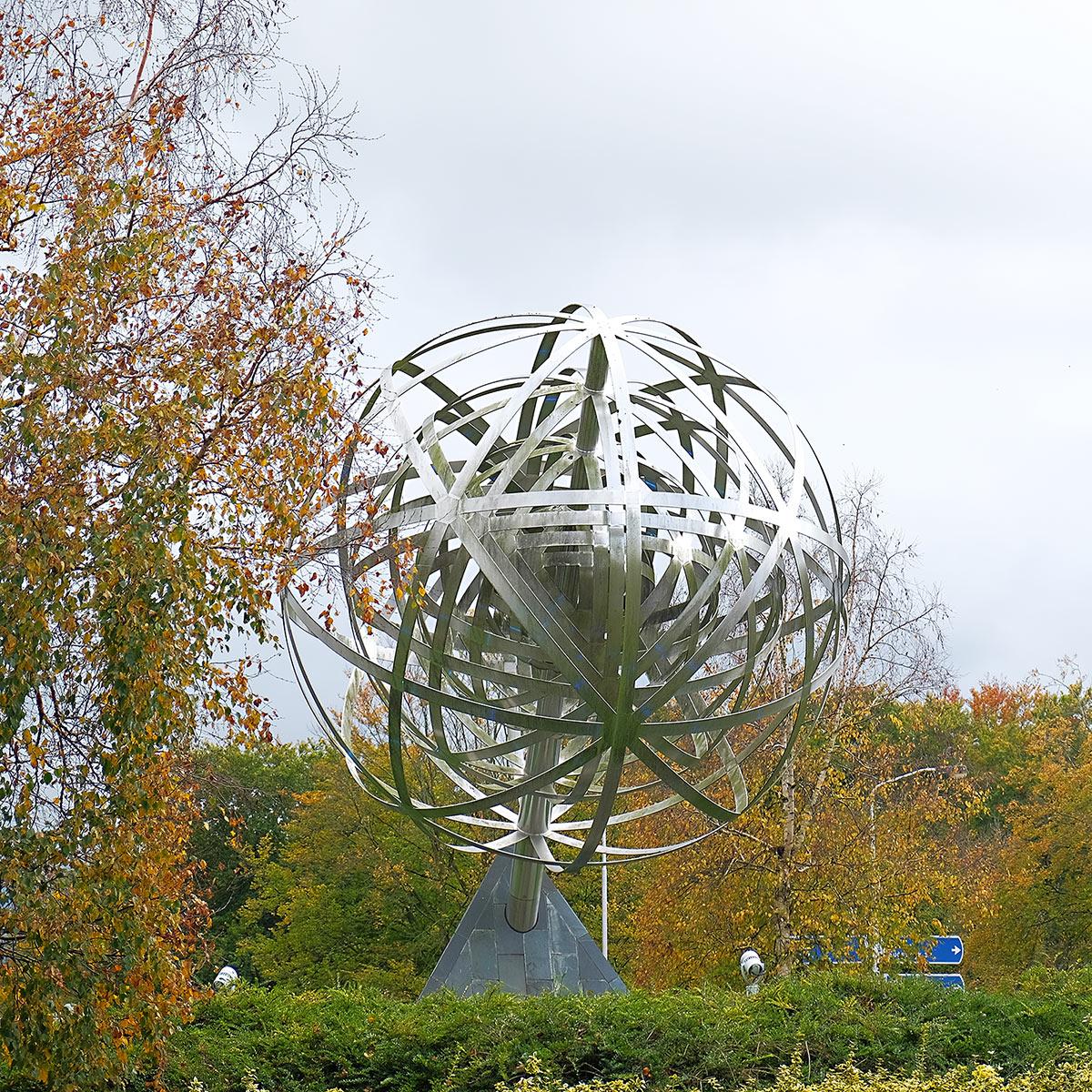
Concentric Rinds (Baarn), designed by Frank de Blok. Photo: Erik Kersten
Baarn
On the roundabout on the N221 in Baarn you will find a three-dimensional steel work of art, based on Concentric Rinds. From 1941 to 1970, Escher lived and worked in Baarn. In 1998, the 100th jubilee of Escher’s birth, the artwork was revealed. The axis with the base is eight metres high and the sphere has a diameter of six metres.
Map is loading...
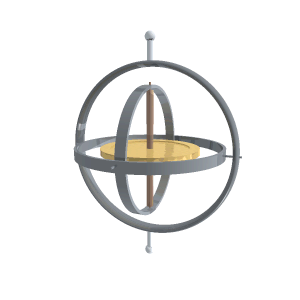
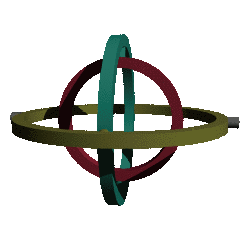
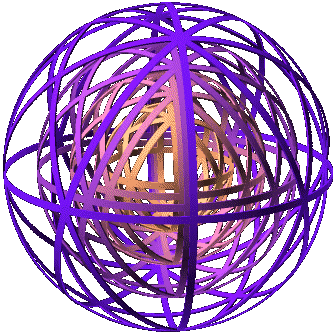
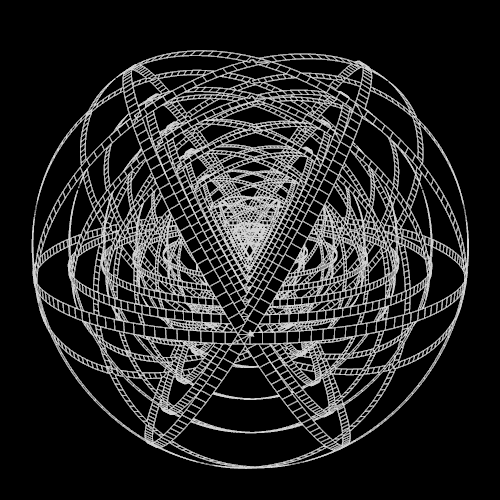
Source
[*] The 2013 reissue by Taschen GMBH of M.C. Escher. The Graphic Work. Originally published by Royal publishing house J.J. Tijl NV, Zwolle 1959, page 15.
More Escher today

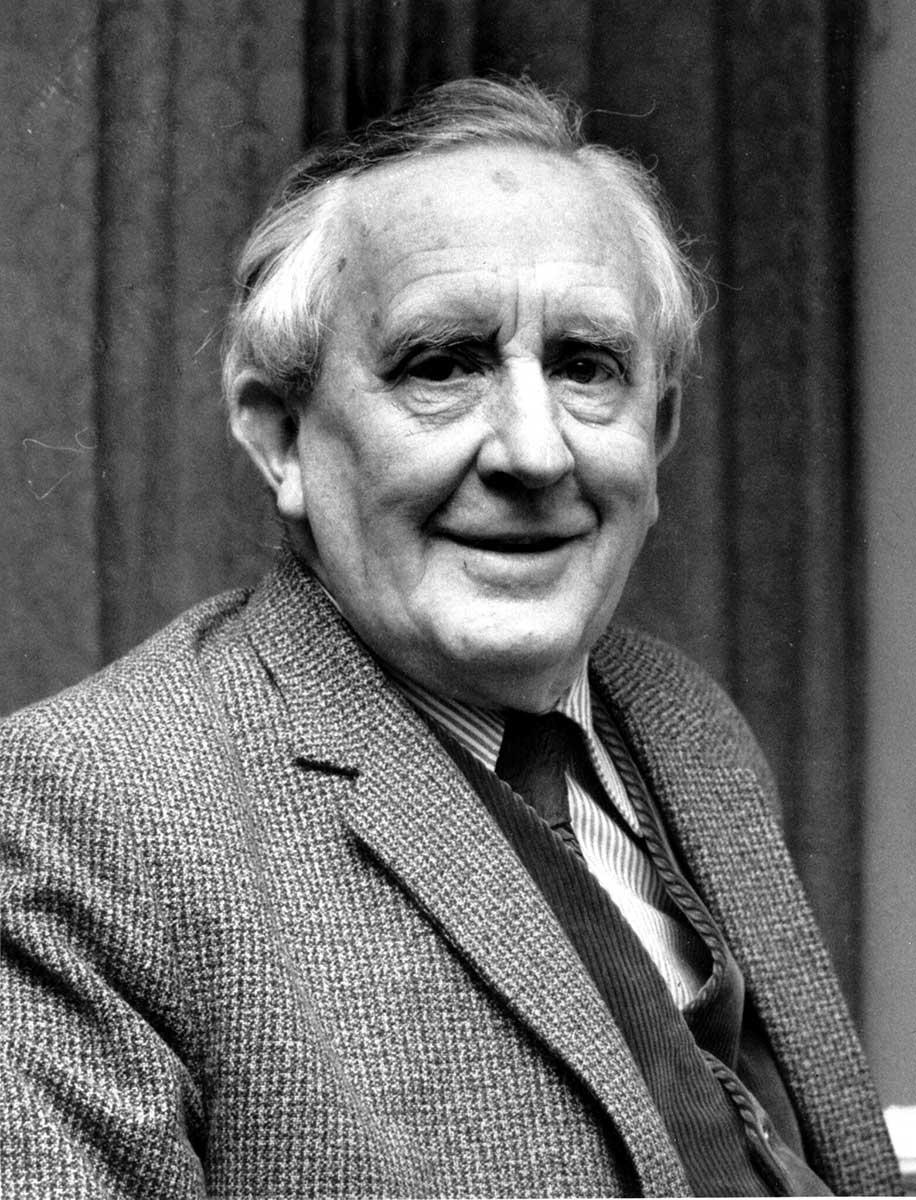
J.R.R. Tolkien
‘Imagine being without Tolkien! The lonely evenings are the most difficult for my patience. But he helps me through them with his fantastic world of Hobbits, Elves, Dwarves and good wizards, contrasting with the most horrible, diabolical monsters’.This ode to the British writer and academic John Ronald Reuel Tolkien (1892-1973), who became world famous for his fantasy cycle The Hobbit, The Lord of the Rings and the posthumously published The Silmarillion, is found in a letter dated 29 June 1962 that Escher wrote to his son George. His son Arthur had treated him to a copy of The Hobbit earlier that year, a book Escher read voraciously whilst bedridden, when reading became a useful means of escape.
